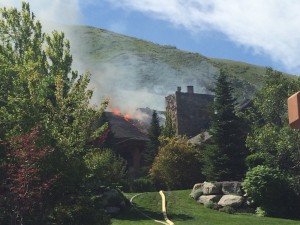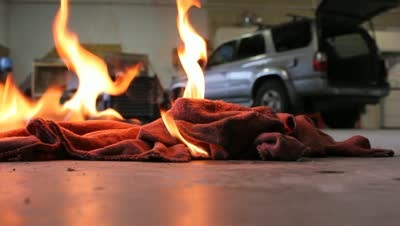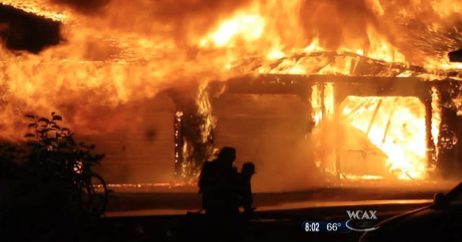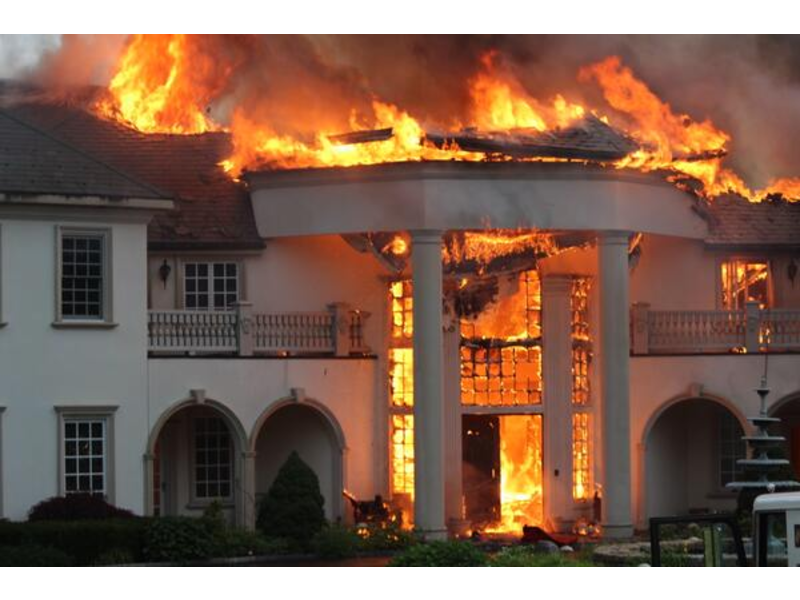Spontaneous Combustion; The Havoc it Can Wreak

Spontaneous combustion as defined by the National Fire Protection Agency (NFPA), is a process by which a material increases in temperature without drawing heat from its surroundings. If the material reaches its ignition temperature, spontaneous ignition or combustion occurs.
“The cause of the fire in Draper was due to what we believe was oily rags left in the garage,” said Unified Fire Capt. Dan Brown. “The rags left next to each other can cause a chemical reaction and light themselves on fire. It’s more common than you would think.”

In more understandable terms, according to wyomingworkforce.com, spontaneous ignition occurs when an object is heated enough to cause a chemical reaction. If you put oily rags in a pile, or place just a couple in a closed container, the materials left together heat up and without the ability to release the pressure into the air, it can start a fire.
According to the NFPA, fires coded as being started by spontaneous combustion or a chemical reaction account for an average of 14,070 fires nationally per year. Of that number, 3,200 were residential or commercial structure fires.
In 2011, the NFPA released statistics on fires that originated in the garages of residential homes. Thirty five percent of those fires were started by oily rags, 34 percent from abandoned materials and improper containers or storage was a factor in 33 percent.
Your home is not the only place in danger of a chemical fire. In the same report, they indicate many instances where combustion fires start in vehicles. More than 36 percent of vehicle fires began in the trunk or cargo area. 20 percent of these fires began with flammable or combustible liquids or gases, piping or filter and nearly 20 percent began with oily rags.
Deputy Chief Derek Maxfield of the Sandy City Fire Department said that the biggest problem is that many people just don’t know this can happen. “We often see where people who are doing random things finishing up floors, decks, furniture and other projects just throw the rags they used away, either in pile or garbage, not knowing that it can lead to a fire.”
Maxfield mentioned that it is something they wish more people understood and that various factors can come into play when creating a hazardous situation. “Not just the kind of oil, like linseed oil is the main issue, but the type of rags used that can ignite faster thus causing a more dangerous situation, are those made by natural fibers like cotton,” said Maxfield.
According to South Burlington Fire Department one of the worst high rise fires in U.S. history happened in Philadelphia in 1991. Meridian Plaza burned for 19 hours, killing three fire fighters. Investigators found the fire started after workers left behind rags stained with linseed oil in a vacant office.

Linseed oil, an oil used for treating and staining furniture, is the most common type of combustible chemical left unattended. There are countless stories on the internet of people who just throw the rags in a pile, or a bucket and walk away. Within about two or three hours, the pile starts to ignite and if not caught immediately, can have had devastating consequences.

In July 2014, in Middlebury, Connecticut, a $10 million home went up in flames after two technicians used a spray foam insulation in the attic and then put the leftover foam in closed up garbage bags where the material ignited itself.
So how can you prevent this from happening to you? The solution is fairly easy. According to Rainbow International Restoration, the best way to avoid combustion is to avoid large piles of contaminated materials. Always lay them flat on a dry surface, separated and not next to each other until they dry completely and become hard and brittle. They are then safe to dispose of.
Proper storage is always going to be the key to preventing combustion. For more information you can visit the National Fire Protection Agency website or call your local fire department.





